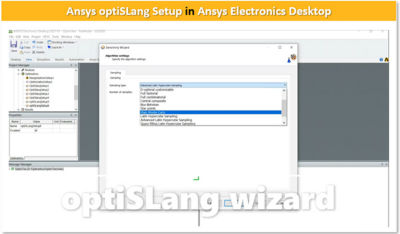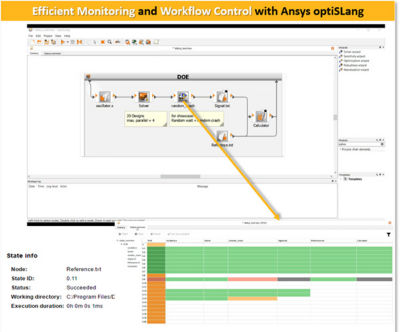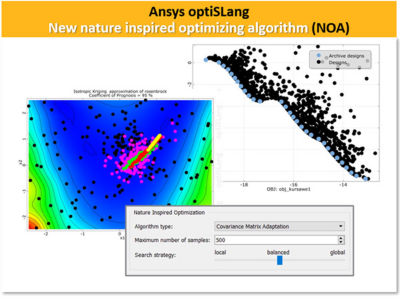-
United States -
United Kingdom -
India -
France -
Deutschland -
Italia -
日本 -
대한민국 -
中国 -
台灣
-
Ansys는 학생들에게 시뮬레이션 엔지니어링 소프트웨어를 무료로 제공함으로써 오늘날의 학생들의 성장을 지속적으로 지원하고 있습니다.
-
Ansys는 학생들에게 시뮬레이션 엔지니어링 소프트웨어를 무료로 제공함으로써 오늘날의 학생들의 성장을 지속적으로 지원하고 있습니다.
-
Ansys는 학생들에게 시뮬레이션 엔지니어링 소프트웨어를 무료로 제공함으로써 오늘날의 학생들의 성장을 지속적으로 지원하고 있습니다.
ANSYS BLOG
February 12, 2021
The Top 3 New Ansys optiSLang Features to Improve Process Integration and Design Optimization
Ansys optiSLang is a process integration and design optimization (PIDO) solution that integrates computer-aided design and engineering (CAD/CAE) tools used to evaluate designs in an automated simulation workflow. It allows you to better understand the design via interactive visualization and artificial intelligence (AI) technologies, so you can make the right decisions in less time. With the 2021 R1 release, Ansys optiSLang continues to scale your parametric design evaluations, enabling you to efficiently work and collaborate on larger, more complex designs.
Let’s look at three of the top features in optiSLang 2021 R1.
1. Better Connection to CAx Tools
Ansys optiSLang process integration connects Ansys, third-party and in-house tools to automate simulation workflows. The graphical programming tools and flexibility of connection, loop and condition setups help you represent and manage your simulation processes.
The 2021 R1 improvements in process integration support scheduler submission via Ansys Electronics Desktop, which enables electrical engineers to design and simulate various electrical, electronic and electromagnetic components, devices and systems. You can run a quick study in Electronics Desktop and forward it to optiSLang to build a workflow and conduct advanced studies.
To further enhance collaboration, 2021 R1 now supports Ansys HPC licensing for efficiently running concurrent parametric variations.
2. Efficient Monitoring and Engineering Workflow Control
The latest release of optiSLang provides better control and monitoring of the workflow through a new Status Overview for displaying and altering status per node and designs. Workflows are also easier to orchestrate.
The latest version includes a simple way to build and publish web apps via Ansys Minerva, which enables enterprise-wide application of PIDO simulation workflows. Minerva, powered by Aras, is a knowledge management application that secures critical simulation data, and provides simulation process and decision support to simulation teams across geographies and functional silos.
Simulation democratization via Ansys multiphysics, optiSLang and Minerva
3. Engineer Better Products in Less Time with Design Optimization
As products continue to grow more complex, it is imperative for you to save time early in the product design and development process by identifying and optimizing the best design candidates. You can benefit from more efficient algorithms in the latest release of optiSLang.
The nature-inspired optimizer algorithm (NOA) has been reworked. The rewritten NOA employs a new evolution strategy with covariance matrix adaptation that improves constraint handling, allowing for a large number of constraints and automatic scaling. It also includes simplified settings in the graphical user interface that present four pre-defined options, a maximum number of designs and a load vs/ balanced vs. global search selection.
Adaptive Metamodel of Optimal Prognosis (AMOP) has also been improved to support single- and multi-objective optimization. The workflow helps you efficiently understand and optimize your design with one algorithm.














